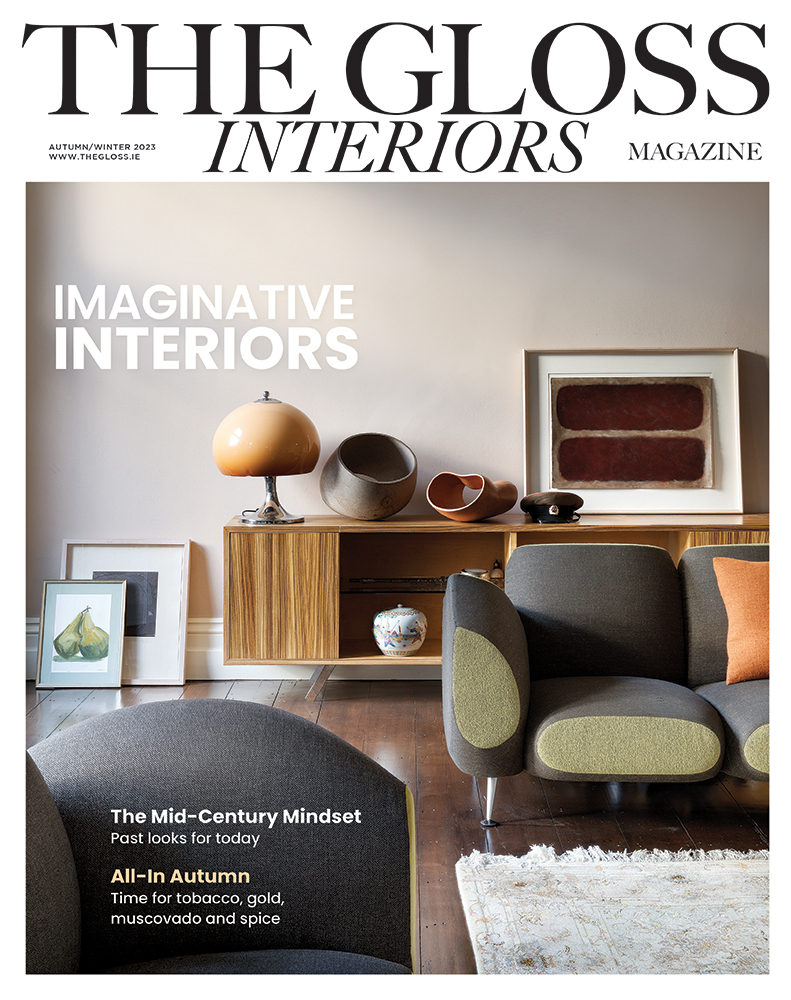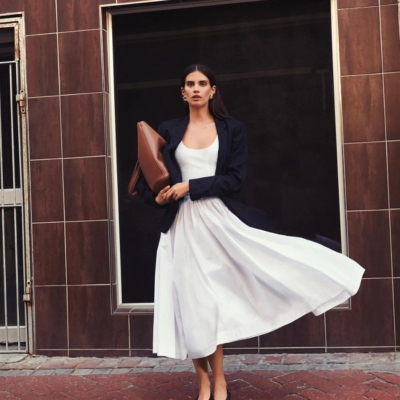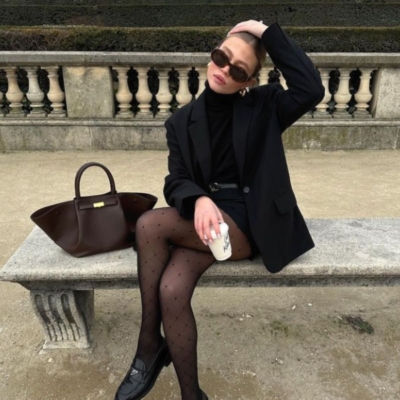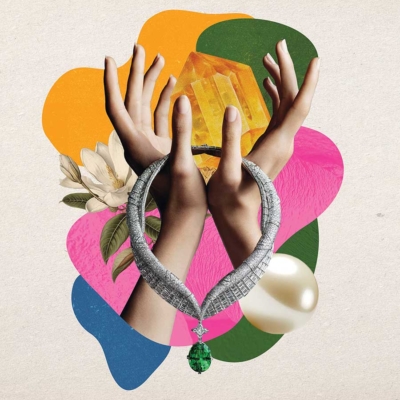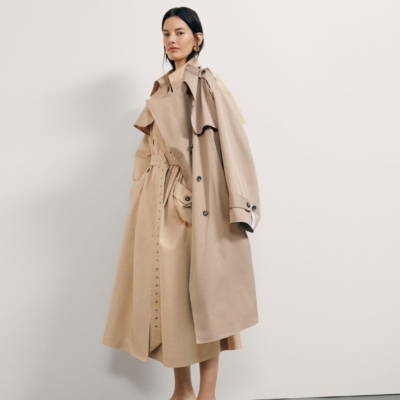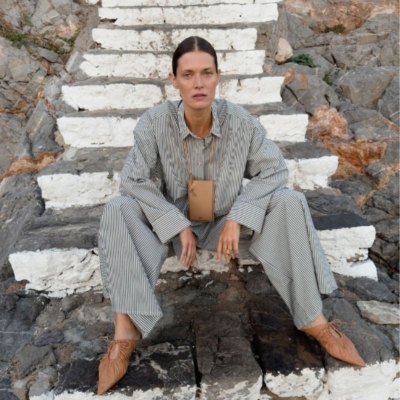The message is simple: stop mowing! Meadows, not manicured lawns, are more on trend than ever. So get rewilding, consider a wildlife corridor, and add a wetland to your garden …
Taking inspiration from the brand’s floral heritage and AW21 collection, this week fashion designer Erdem Moralioglu unveiled a floral installation he designed for George, the private members club located in London’s Mayfair. The club’s façade was decorated using a mix of burgundy, white, pink and blush gypsophila and hydrangeas. It marked the closure of London Fashion Week and the start of RHS Chelsea Flower Show as well as cementing the close links between gardening and fashion. If dark romance is one of the key fashion trends this year, fusing flower prints with feminine silhouettes – look no further than avid gardener Dries Van Noten’s latest collection, or Simone Rocha, who has named her AW21 collection “Winter Roses” – pretty dresses defined by Edwardian balloon sleeves, layers of tulle ruffles and three-dimensional satin roses.

Traditionally London’s posh squares and stores are festooned in flowers to celebrate RHS Chelsea. Irish floral designer Neill Strain has been participating in “Belgravia in Bloom” (where designer Louise Kennedy’s flagship store is located), and this year his installation, created with Judith Blacklock Flower School, has taken the theme of a floral fairground, with a flamboyant carousel as its centrepiece. It’s upbeat and show-stopping much like RHS Chelsea, which opened in September for the first time in its 108-year history.
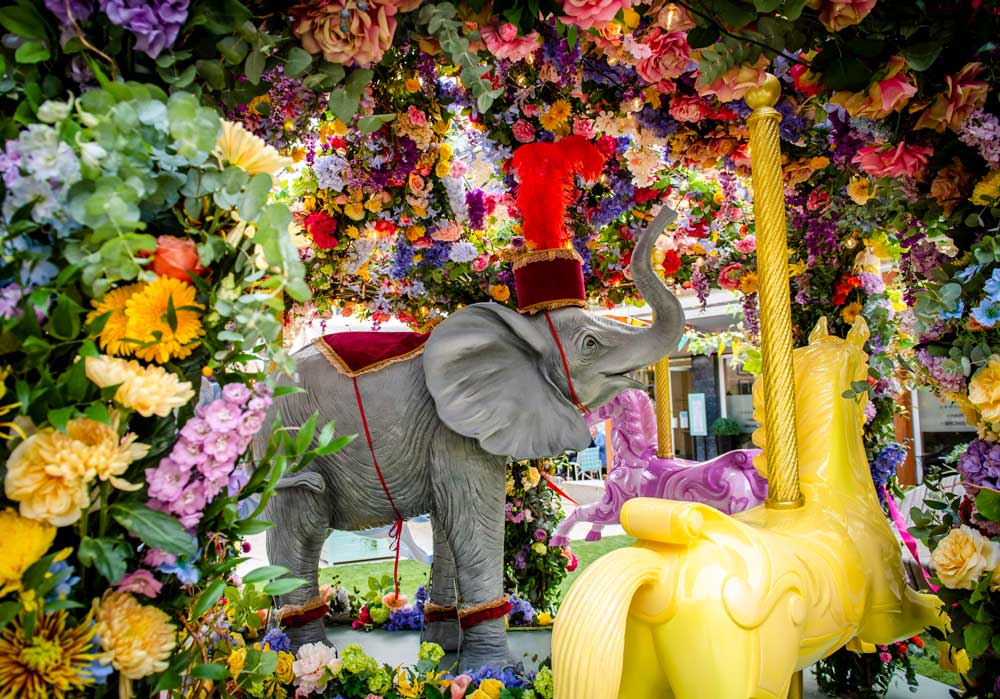
Unofficially called the Oscars of the gardening world, RHS Chelsea Flower Show is a social occasion as much as a trend-setting event featuring some of the world’s leading growers, florists and nurserymen. The Show attracts royals and celebrities. Visitors to this year’s event have included Princess Anne, Sophie Countess of Wessex, Dame Judi Dench and actresses Sally Phillips and Helen George. They all made a beeline to Main Avenue – the location of the Show Gardens – where Irish garden designer Diarmuid Gavin has been a regular participant. Gavin has presented at Chelsea on nine occasions, winning a gold medal in 2011 for his “Irish Sky Garden” (which he described as a suspended table), and a silver gilt for his “British Eccentrics Garden” inspired by the illustrations of Heath Robinson in 2017. The latter was planted with help from Helen Dillon and Carmel Duignan.
The theme for this year’s show was the positive impact of plants on our health and wellbeing. Many of the show gardens also take inspiration from foreign landscapes. In a year where international travel is limited, these gardens transport visitors to faraway destinations. Effectively combining both ideas of tranquility and travel was the winner of “Best in Show” given to designers Peter Chmiel and Chin-Jung Chen for their Guangzhou Garden. This garden took inspiration from Guangzhou in southeast China, which is known as the city between the mountain and the water.
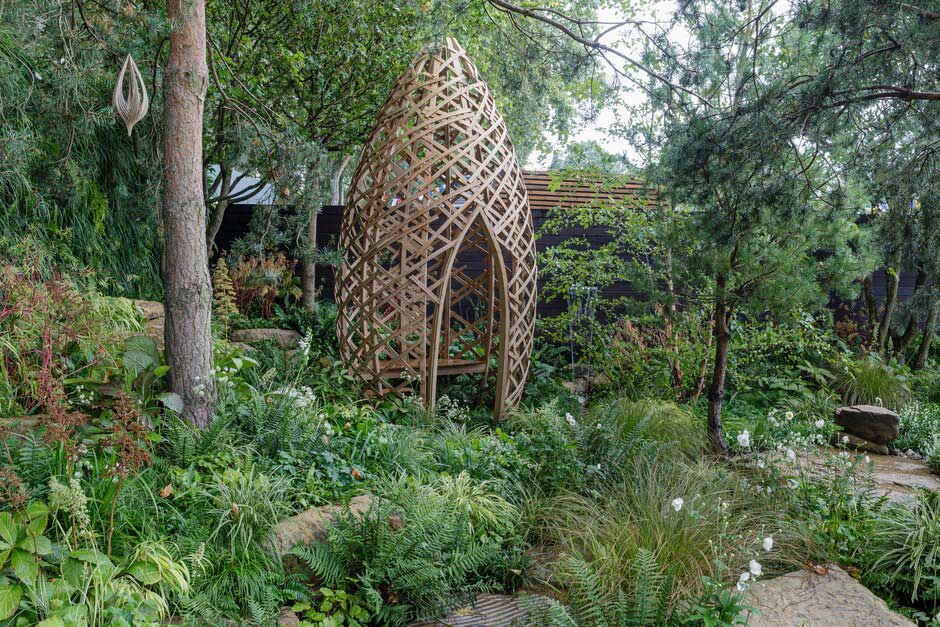
Chmiel and Chen, who are first time winners at Chelsea, created a calming space that cleverly blurred the boundaries between aquatic and perennial plants, highlighting the benefits of responsible city planning. Their mission was to show how planners must work in harmony with nature to connect people to the natural world. The garden features a woodland dell for cleaner air, a pool of water and shelters for both people and wildlife. Waves of green foliage are dotted with perennials in hues of white, blue and yellow.
In other categories, the “Best Sanctuary Garden” was awarded to the Bible Society for its “Psalm 23 Garden” designed by Sarah Eberle. This featured drystone walls, with ferns and the soothing sound of falling water, inspired by the landscape of Dartmoor where Eberle grew up.

The “Best Artisan Garden” was “The Blue Diamond Forge Garden” designed by the Blue Diamond Group Team, which featured a rustic thatched forge around which flowers in tones of red, orange and gold were planted to represent the heat from the forge. I couldn’t help thinking of Seamus Heaney’s poem “Forge” from the anthology Door into The Dark when I saw pictures of the garden, complete with anvil …
“All I know is a door into the dark,
Outside, old axles and iron hoops rusting;
Inside, the hammered anvil’s short-pitched ring,
The unpredictable fantail of sparks
Or hiss when a new shoe toughens in water.”

It’s been estimated that over three million people took up gardening during lockdown, reflected in two new categories; the Container and Balcony gardens, which provided ample inspiration for smaller spaces. Of note, the “Sky Sanctuary Garden” featured an egg-shaped hanging chair, outdoor lights and colourful borders while “The Arcadia Balcony” garden by Martha Krempel used lush planting, rust hues and repurposed a door from an Indian palace as the focal point.

If any trends have emerged from the various categories, it’s that rewilding is more popular than ever. Forget manicured lawns, meadows are in, as are wildlife corridors. What we want now is the perfectly imperfect garden with rounded edges and interesting installations, rather than straight lines or borders.
Tom Massey’s organic “Yeo Valley Garden” (pictured) was deliberately designed with smaller paths to slow you down, and was planted with flowers which are good pollinators (try rudbeckia and salvia). The egg-shaped, steam-bent oak hide is apparently a symbol of soil fertility and health and is suspended over a stream that runs through the garden. The hide is a place to relax and observe nature and visiting wildlife. Massey’s garden like many others included the calming sound of water; another trend. Adding a pond or wetland is great for attracting hedgehogs and birds, as well as for planting aquatic plants such as lilies and flag irises.
Pergolas were also popular as featured in one of my favourite gardens – the beautiful outdoor dining space created by Alan Williams in the “Parsley Box Garden” (main featured image). Williams used “airy” plants such as salvias and grasses and mixed them with herbs such as oregano, mint, chard and parsley. For a sense of privacy he used espalier pear trees on one wall and hawthorn on the other.
As for this year’s plant of the year, it’s the cersis candensis “Eternal Flame” or forest pansy. This shrub or small tree produces heart-shaped leaves and colourful foliage, which change from deep red to burnt orange and yellow. Jewel colours in planting again reflect the dark romance trend in fashion – think dark velvety dahlias, orange kniphofias, echinacea and purple salvias.
Ireland triumphed too at this year’s show. This weekend, visitors to the Grand Pavilion will find Irish horticulturalist Billy Alexander from Kells Bay Gardens in Kerry, who won a gold medal for his exotic fern display which he described as a microcosm of Kells Bay, planted with Dickonsia Antartica tree ferns. The RHS said the display “showcases the uniqueness, diversity and beauty of world fern species, all of which grow naturally in the idyllic microclimate at Kells Bay Gardens overlooking the Dingle Peninsula”.
By the way, the sub-tropical landscape at Kells reflects the catwalk designer Riccardo Tisci created for his SS21 Burberry show, a forest lined with ferns. If you haven’t been to Kells Bay House, owned by Alexander (and featured in THE GLOSS), it’s open all year with a plant nursery, Conservatory Cafe and accommodation available overlooking the sea and gardens – it’s truly idyllic …
LOVETHEGLOSS.IE?
Sign up to our MAILING LIST now for a roundup of the latest fashion, beauty, interiors and entertaining news from THE GLOSS MAGAZINE’s daily dispatches.

